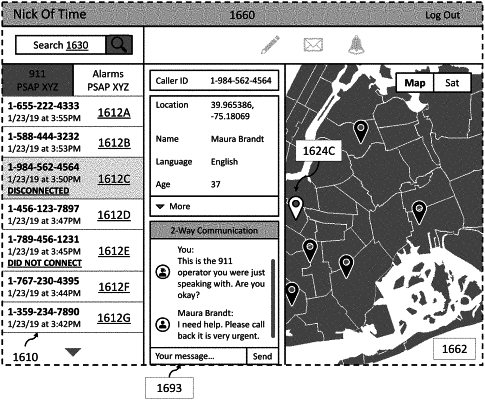| CPC H04W 4/90 (2018.02) [H04M 1/72469 (2021.01); H04W 4/12 (2013.01)] | 18 Claims |

|
1. A method for sharing emergency data between two or more emergency service providers (ESPs), by an emergency management system (EMS), the method comprising:
providing a first instance of an emergency response application to a first ESP and a second instance of the emergency response application to a second ESP based on a plurality of geofences, each of the plurality of geofences representing jurisdiction of each of a plurality of ESPs including the first ESP and the second ESP,
wherein the emergency response application comprises a graphical user interface (GUI) comprising a list of incidents and an interactive map;
receiving, through the GUI of the first instance of the emergency response application, a selection of an option to share a first incident from within the list of incidents;
displaying, within the GUI of the first instance of the emergency response application, a list of ESPs comprising ESPs available for sharing the incident with, wherein the list of ESPs comprises the second ESP;
receiving, through the GUI of the first instance of the emergency response application, a selection of the second ESP from the list of ESPs;
transmitting emergency data associated with the first incident to the second ESP through the second instance of the emergency response application,
wherein the emergency data associated with the first incident comprises a user identifier and an emergency location;
displaying, within the GUI of the second instance of the emergency response application, the user identifier as a second incident within the list of incidents and the emergency location as an incident location within the interactive map; and
initiating a two-way, text-based communication session between the first and second instances of the emergency response application.
|